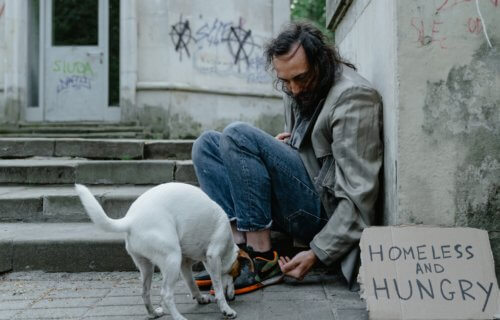SANTA FE, N.M. — Today, more than half of the people on this planet live in an urban setting. In the years to come, scientists predict that number will continue to rise as more and more “megacities,” or urban areas holding 10 million or more residents, develop around the globe. Many economists may argue that’s a positive for city dwellers, as studies show they generally prosper more than rural residents. Unfortunately, a new report finds that only holds true for the rich, while the poor must deal with steeper bills and stagnant incomes.
Researchers from the Santa Fe Institute say that large cities end up creating more income inequality. There have been many investigations on this complex topic over the years, but the study authors say their new work separates itself from the pack by accounting for societal inequality.
“Previous literature has looked at urban scaling through a lens of homogeneity,” says study co-author and Santa Fe Institute (SFI) Omidyar Fellow Vicky Chuqiao Yang in a university release. “But we know from other literature, especially in economics, that many societies are unequal and economic outputs are not distributed evenly.”
Utilizing data collected from across the United States, researchers separated urban residents into various groups based on income. This led to the finding that as a city grows the top 10 percent of income earners gain an even larger share of the wealth.
“For a long time, what has often been thought about in urban scaling is the whole system,” explains study co-author Chris Kempes.
The rent is too darn high!
What these theories fail to consider, study authors say, is that it isn’t just wealth that increases when a city grows larger. Cost of living also goes up. When the team includes housing prices in the equation, it becomes very clear that when an urban area grows and thrives housing costs increase at a much faster rate than income among low-earners.
“For the lower decile, there is no proportional increase in wealth. So, the city is not increasing economic benefit, but it’s not decreasing it either,” Kempes notes. “However, since costs do go up, the experience of the poorest individuals gets worse.”
Researchers conclude that inequality in general is largely an urban phenomenon, caused by deep-seated social elements that study authors say “desperately need” a solution.
Poorer neighborhoods see fewer benefits of urbanization
For a long time, economists and historians have believed that as a city and its population grows there is more potential for the spread of new ideas, innovations, and social or cultural mixing. That may have been true a century ago, but today poorer city dwellers usually find themselves living their own neighborhoods away from wealthier areas.
“What was a huge surprise in this research was that, as the city grows, there’s no advantage to people in the bottom 10-20th percentiles. As you go down the income deciles, the value-added for city-dwellers got less and less in a systematic way… so much so that, in the bottom decile you get nothing at all. There’s even evidence that you’re losing quality of life,” concludes study co-author Geoffrey West. “Here we found that rich are getting even richer than we thought and the poor are getting even poorer than we thought.”
The findings appear in the Journal of The Royal Society Interface.
